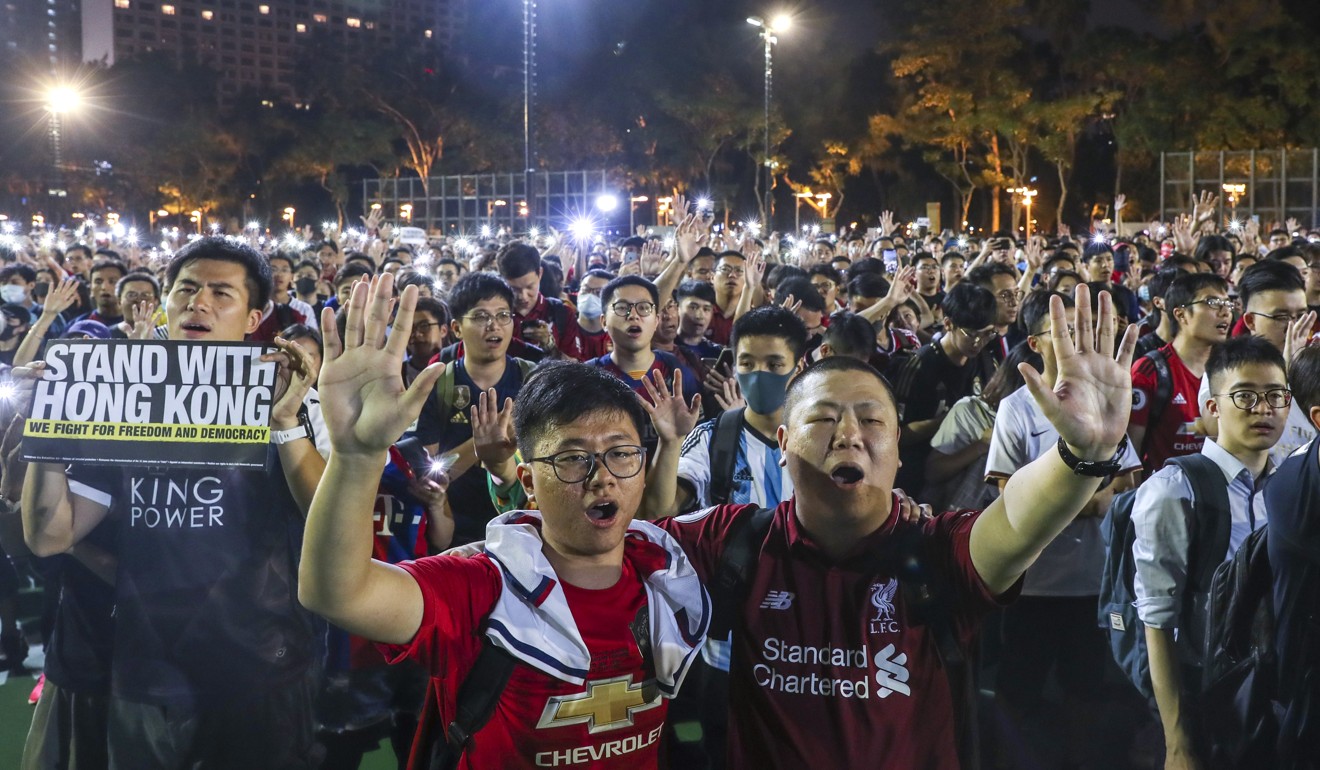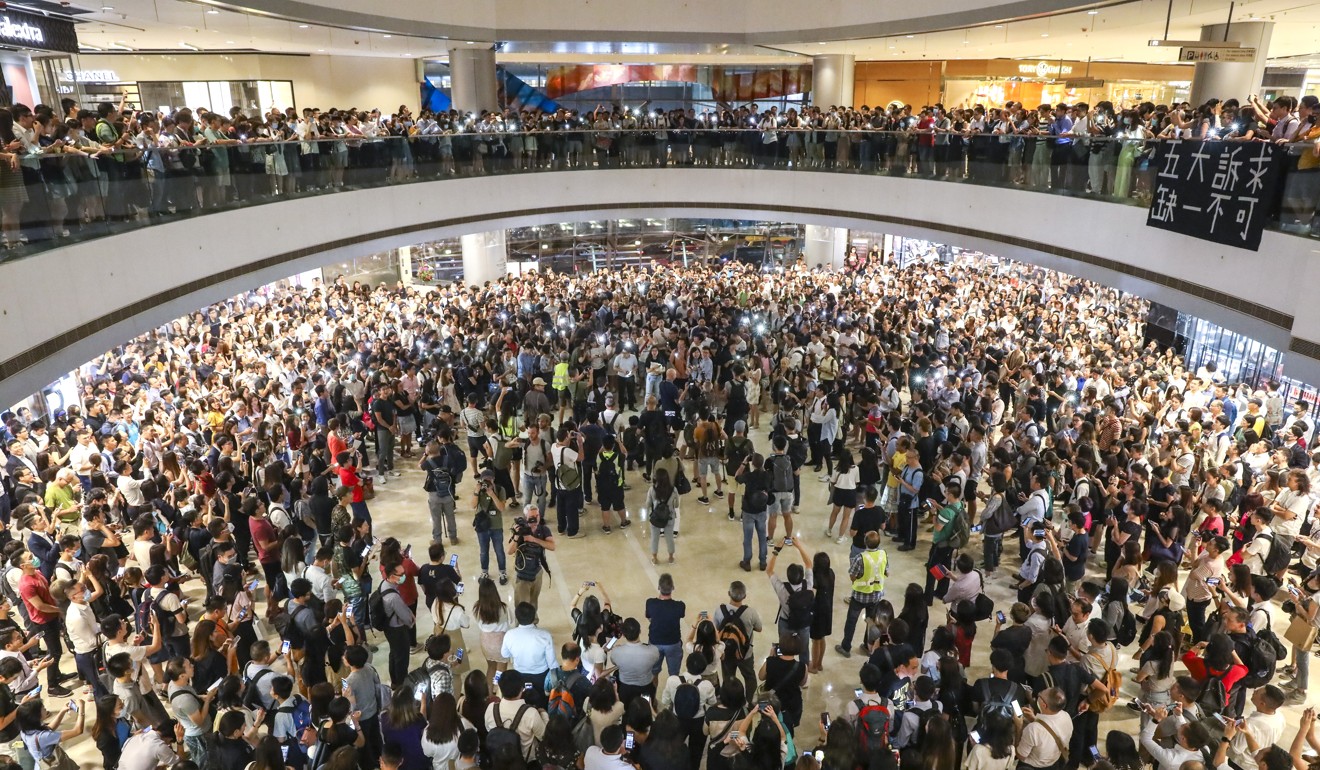
Hong Kong protest anthem Glory to Hong Kong takes on a life of its own, translated and performed in sign language
- It’s become the song of Hong Kong’s summer of protest, and a producer working with its composer says the reason is simple: its martial beat
- Several versions have been posted online, the latest for deaf supporters, and it has been sung in shopping malls. It strengthens protest spirit, producer says
Hong Kong protest anthem Glory To Hong Kong, a crowdsourced composition sung by anti-government protesters and their supporters in the streets and in shopping malls, continues to take on a life of its own.
Composed by a Hong Kong musician known simply as “Thomas” and posted online to YouTube in August, since when the original video has been viewed 2.2 million times, the song has been translated into languages including Japanese, German, and Italian and the Taiwanese Hokkien Chinese dialect.
The most recent rendition of the song gives voice to the deaf, with a performance in sign language.
A key purpose of the song is to rally and unify protesters, says a member of the 20-plus-strong team the composer has recruited to produce it, and who uses the pseudonym PI.
“The song encapsulates the shared ethos of Hongkongers: the progression starts by plunging into the current despair, and yet soldiering on and ultimately achieving the final, shared glory that belongs to Hong Kong,” says PI.

Thomas, a musician in his mid-twenties, began composing the song in early June. He was prompted by supporters of the anti-extradition movement, who donated safety gear to frontline protesters. He wished to contribute to the cause by doing what he does best – making music – he says.
“A helmet can protect them from assaults for a while, but it is an iron will that proves to be ultimately impenetrable. The regime may beat us with batons, shoot us and even kill us, but no one can suppress Hongkongers’ united will to fight for our freedom and democracy,” Thomas says.
His song has caught the imagination of a section of the Hong Kong public. Choruses of Glory to Hong Kong break out spontaneously during protests, and it has been sung almost nightly at community sessions in city neighbourhoods and shopping malls; people bring along instruments on which to accompany singers. Many who sing it have memorised its verses, while old people, unfamiliar with smartphones, sing from a copy of the lyrics they have written out, which include the protesters’ slogan “Liberate Hong Kong, Revolution of Our Times” – seen by opponents as a challenge to China’s sovereignty over Hong Kong.
A producer of one of the music videos, who uses the name WordArt, stresses the significance of the group singing sessions as a form of protest in which people can participate without fearing repercussions or arrest.
“Protesters constantly feel insecure, since most of us have to act anonymously. You wouldn’t know who’s with you in the neighbourhood. Music, especially this song, creates a rather peaceful singalong occasion that reveals the size of the supporting crowd. You can actually hear the people and feel that they are standing with you,” says WordArt.
Unlike other songs protesters have sung, Glory to Hong Kong has a martial beat PI believes is better suited to the current tone of the protests.

“Boundless Oceans Vast Skies [by Hong Kong rock band Beyond] is largely a pop ballad. Sing Hallelujah to the Lord was often heard during the early days of the [protests], but [carries] cultural baggage [because it is a Christian hymn],” says PI. “A march fits, with its uniform rhythm matching the uniform steps of protesters. No more sentimental softness, but strength in determination.”
Mere singing, however, is not sufficient, says PI, echoing a common criticism of the community chorus as a means of resistance. It may be a spectacular display of soft power and draw international attention to Hongkongers’ political cause, but it hardly puts pressure on the government, says PI.
“The song is only meant as a ‘buff’, an encouragement and strengthening of the spirits, in preparation for the actions that need to be done.”

Demonstrations have become increasingly violent and destructive since millions marched peacefully in June in opposition to the proposed extradition law change. Despite its withdrawal, announced this month, protests continue, and protesters’ demands have expanded to include an independent inquiry into police handling of the protests, with officers accused of using excessive force.

